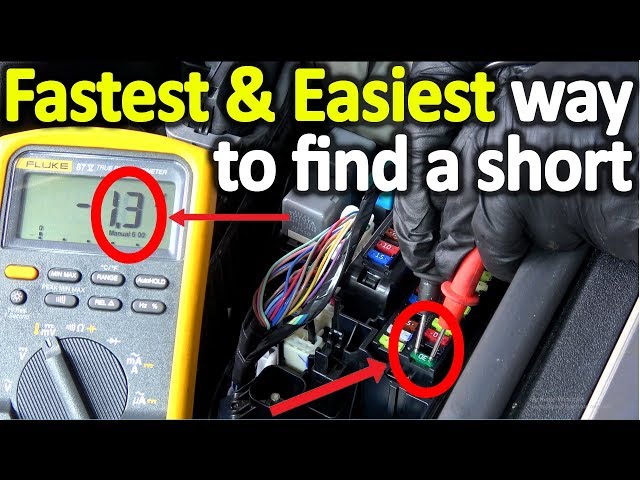
Best Way to Check a Short Circuit
Short circuits can cause serious damage to your electrical system if not identified and addressed promptly. If you suspect that you have a short circuit in your home, it is crucial to take the necessary steps to locate and resolve the issue before it escalates. In this article, we will discuss the best way to check for a short circuit and how to safely address the problem.
What is a Short Circuit?
A short circuit occurs when a low-resistance path forms between two conductive points in an electrical circuit. This can result in excessive current flow, which can lead to overheating, electrical fires, and damage to your appliances or electrical system. Short circuits can be caused by a variety of factors, including damaged insulation, faulty wiring, or a malfunctioning appliance.
How to Check for a Short Circuit
There are several methods you can use to check for a short circuit in your home. Here are some of the most effective ways to identify and address a short circuit:
- Check for blown fuses or tripped circuit breakers: A blown fuse or tripped circuit breaker is a common indicator of a short circuit. Start by resetting the circuit breaker and replacing any blown fuses to see if this resolves the issue.
- Look for burning smells or overheating appliances: If you notice a burning smell or feel that an appliance is overheating, it could be a sign of a short circuit. Unplug the appliance immediately and inspect the power cord for any signs of damage.
- Use a multimeter to test for continuity: A multimeter is a handy tool that can help you test for continuity in your electrical circuit. Set the multimeter to the continuity setting and touch the probes to the two points in question. If the multimeter beeps, it indicates that there is a short circuit between the two points.
- Inspect the wiring for signs of damage: Inspect the wiring in your home for any signs of damage, such as exposed wires, frayed insulation, or burn marks. If you notice any of these issues, it is crucial to address them immediately to prevent a short circuit.
- Call a professional electrician: If you are unable to locate the source of the short circuit or are uncomfortable working with electrical systems, it is best to call a professional electrician. An electrician can safely diagnose the issue and make the necessary repairs to prevent future short circuits.
How to Safely Address a Short Circuit
If you suspect that you have a short circuit in your home, it is crucial to address the issue safely to prevent any further damage or injuries. Here are some tips for safely addressing a short circuit:
- Turn off the power: Before attempting to address a short circuit, it is crucial to turn off the power to the affected circuit. This will help prevent any accidents or injuries while you are working to resolve the issue.
- Unplug appliances: If you suspect that an appliance is causing the short circuit, unplug it immediately to prevent any further damage. Inspect the power cord for any signs of damage before plugging it back in.
- Replace damaged wiring: If you discover that a damaged wire is causing the short circuit, it is crucial to replace the wiring to prevent future issues. Use proper insulation and secure the wires to prevent any accidental contact.
- Test the circuit: Once you have addressed the short circuit, test the circuit to ensure that the issue has been resolved. Turn the power back on and check for any signs of overheating or burning smells. If the problem persists, it is best to call a professional electrician for further assistance.
In Conclusion
Short circuits can pose a serious risk to your home and safety if not addressed promptly. By following these steps to check for and safely address a short circuit, you can protect your electrical system and prevent any potential hazards. Remember to always prioritize safety when working with electrical systems and consult a professional electrician if you are unsure how to proceed.
Was this helpful?
0 / 0